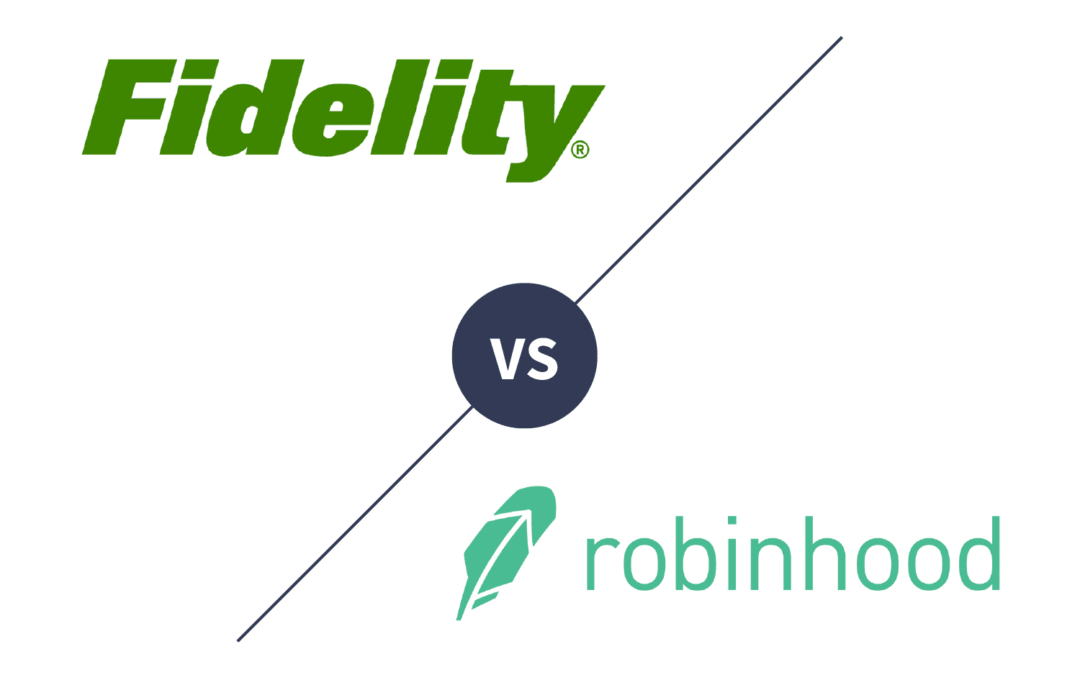Fidelity and Robinhood are both popular investment platforms. Both offer commission-free stocks, fractional shares, and exchange-traded funds (ETFs). However, they are not as similar as you may think at first glance. If you’re a first-time investor just getting started with one of these apps, it pays to have all the details to select the best option to suit your investment needs.
Let’s take a deeper look at Robinhood and Fidelity.
All about Robinhood
Headquartered in California, Robinhood is mainly a financial services company. It’s a trading platform that offers secure trading accounts for stocks, ETFs, and cryptocurrencies.
Robinhood launched its investment app in 2013. Its mobile trading app is also one of the most popular platforms for Bitcoin trading.
A few benefits of Robinhood include:
- Commission-free stocks trading, options, ETFs, and cryptocurrencies
- Cash management accounts
- Available margin accounts and fractional shares
- Easy-to-navigate mobile app and web platform
A few of the downsides of Robinhood include:
- No bonds or mutual funds
- Limited investment types
- No custodial accounts or IRAs
- Crypto wallets are not yet rolled out, but a waitlist is available
All about Fidelity
Fidelity is a more experienced brokerage company. It has more than 40 million investors with an average daily trade of 2.4 million.
Fidelity offers several services, including wealth management, financial advice and planning, investing plans, and brokerage services for stocks, bonds, ETFs, and options.
A few of the advantages of Fidelity include:
- No minimum amount for automated or brokerage accounts
- Wealth-building accounts for automated investors, active traders, and retirement investors
- Zero expense ratio for index funds
- Commission-free stocks and ETFs
- Advanced trading platforms
- Market analysis
- No transaction fees for mutual funds
The disadvantages of Fidelity include:
- No cryptocurrencies
- Fidelity Go is more expensive when you have a higher account balance
Fidelity vs. Robinhood: The Comparison
With a basic understanding of Fidelity and Robinhood, let’s look at what makes these two platforms different. Here are some of the key features of each and how the two platforms compare.
Ease of Use
Both platforms offer mobile applications as well as online platforms. Robinhood has a user-friendly interface, so even beginners can grasp how to navigate the platform.
In contrast, Fidelity has a more robust and advanced UI system, but the lengthy list of features and functionality can make it confusing to new users.
In addition to their mobile apps, Robinhood and Fidelity have responsive web-based platforms when you want to trade, but Robinhood performs better on smaller screens. So, if you prefer using your mobile phone when investing, Robinhood is generally the better choice.
Range of Offerings
Fidelity gives clients a wider range of trading options. But if you plan to trade cryptocurrencies, this investment platform is not the best bet. Fidelity doesn’t offer crypto trading, which can make it a less attractive choice to some customers.
Robinhood allows cryptocurrency trading as long as it’s in the same account you use for options and equities. However, aside from cryptocurrency trading, Robinhood has a limited range of offerings compared to Fidelity.
Commissions and Fees
Both Robinhood and Fidelity do not require a commission fee when buying online stocks or making ETF trades. You don’t need to pay account maintenance fees for these brokerage firms, either.
However, Robinhood has a paid membership plan that comes with added benefits. Robinhood Gold costs $5 per month.
Another difference is that Fidelity doesn’t charge you to close your account. However, if you want to close your Robinhood account, it’ll cost you $75.
Trading Experience
Robinhood might not be the best platform to use if you’re a professional trader. But if you’re a beginner, you might enjoy this platform’s basic functionalities.
In contrast, Fidelity takes trading to a more professional level. You can place basket trades and trade from charts. Fidelity also allows users to set trade defaults and use hotkeys.
The trading experience is also different if you’re using the platforms’ mobile applications. There are more comprehensive features and trading tools with Fidelity’s mobile app, including:
- Portfolio management tools
- Ability to place conditional orders
- Real-time market updates
Robinhood, on the other hand, continues to be a fairly basic investing platform regardless of whether you’re using the app or the website.
Research and Account Amenities
Fidelity has all the amenities you need in a brokerage firm. These include:
- Trading idea generators
- Flexible screeners
- Access to third-party and in-house research
- Advanced charting
Robinhood is not as extensive as Fidelity. It does not have screeners for any stocks, mutual funds, or ETFs. Also, you will not find trade idea generators, tools, or calculators you need for trading.
Robinhood does have third-party research, news, and dividend reinvestment plans, but these are not unique features, and any investment platform should have them. Overall, Fidelity has more amenities useful for trading and research.
Investment Types
Fidelity and Robinhood both offer the following types of trades and investments:
- Stop and limit orders
- Market orders
- Trailing stop orders
- Stop-limit orders
One thing to note is that you cannot create conditional orders with Robinhood, but they are allowed on Fidelity as long as you’re using the website and not the mobile app.
The Verdict
Both Robinhood and Fidelity are great investing apps. Robinhood is more geared toward beginners and cryptocurrency traders, while Fidelity makes it easier for you to make advanced investments.
Whatever you choose, just make sure you do your research and pick the best option for your unique situation.

